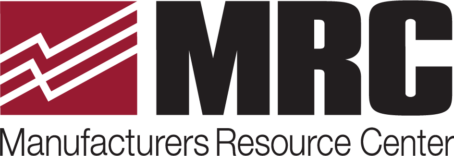Effective Compensation Management
Unlocking Business Success: Compensation Trends and Strategies in Manufacturing
By Diane Lewis, Vice President
Manufacturing Solutions & Center Operations
Manufacturers Resource Center
In the ever-evolving landscape of manufacturing, the dynamics of the labor market play another pivotal role in shaping organizational success. Amidst the complexities of a volatile labor market, understanding compensation trends and strategies has emerged as a crucial component for senior leaders, transcending the confines of HR, in driving business outcomes and charting a course toward sustainable success.
Crafting a Systematic Approach

Diane Lewis
In a bid to propel business growth, attracting, retaining, and motivating talent becomes paramount. Our recent webinar on this topic, Effective Compensation Management, underscores the fundamental principles for effective compensation management. It delineates a systematic approach that aligns compensation with workforce strategy, enabling organizations to structure pay programs that resonate with their business goals.
Compensation management encompasses various strategies and practices designed to ensure fair, competitive, and motivating pay structures within an organization. Here are some examples:
- Job Assessment and Classification: Evaluating and categorizing organizational roles based on criteria like duties, required expertise, and intricacy to establish a structured hierarchy of positions. Avoiding misclassification of employees as exempt vs non-exempt to evade compliance consequences.
- Comparing Compensation: Conducting salary surveys and industry benchmarking to ensure the organization’s pay scales remain alluring and competitive for both attracting and retaining talent.
- Performance-Linked Compensation: Implementing pay structures linked to performance, such as bonuses, incentives, or commissions tied to individual or team accomplishments.
- Comprehensive Benefits: Offering a wide array of benefits and privileges, including healthcare coverage, retirement plans, stock options, flexible work arrangements, or wellness programs, as part of the overall compensation package.
- Transparency in Pay: Providing clear insights into the compensation system, including salary determinants, pay ranges for different roles, and criteria for promotions or salary increments.
- Analyzing Pay Equity: Regularly examining pay information to ensure fairness, addressing any disparities related to gender, race, or other factors, and maintaining compliance with regulations.
- Compensation Oversight Committees: Establishing internal committees responsible for overseeing and deciding on compensation policies, ensuring alignment with the company’s objectives and principles.
- Career Growth Opportunities: Providing avenues for professional development, skill enhancement, and training programs contributing to career progression, indirectly affecting compensation growth.
- Flexible Compensation Models: Introducing adaptable compensation plans that permit employees to select among various forms of compensation, such as extra time off, bonuses, or monetary rewards, suiting individual preferences.
- Long-Term Incentive Programs: Implementing plans that reward employees for their sustained commitment to the organization, like stock options or profit-sharing plans vested over several years.
These examples highlight the multifaceted nature of compensation management, where organizations strive to create fair, competitive, and motivating compensation packages to attract, retain, and motivate their workforce.
The Imperative of Pay Transparency
One notable facet in this realm is pay transparency—a concept increasingly gaining traction. Transparent compensation practices provide employees with a clear view of the salary range for their roles within an organization. For manufacturers, this not only fosters trust but also aligns with the quest for fair and equitable pay structures. At present, this is not officially legislated in Pennsylvania, but other states have activated this policy.
Navigating Regulatory Challenges
For smaller manufacturers, the absence of internal compensation experts can pose challenges. This void often results in missed opportunities and potential pitfalls in navigating the complex regulatory landscape. Addressing common compensation regulatory challenges, particularly for small and mid-sized organizations, becomes imperative for ensuring compliance.
MRC Compensation Management Webinar: Demystifying Strategies
Efficient pay management stands as a linchpin for organizations. Payroll costs represent a significant chunk of expenses, accentuating the need for effective management. Our Effective Compensation Management webinar demystifies strategies utilized by established organizations, empowering smaller counterparts to implement these insights within their structures.
Who Benefits?
This compensation webinar is tailored for owners, executives, and senior leaders across all functions within manufacturing. It’s a chance to glean insights from seasoned HR and compensation professionals, offering tangible takeaways for implementing fair, motivating, and compliant pay structures.
Learn from the experts:
Chris Brown | Senior Compensation & HR Consultant | CCI Consulting
Susan McDonald | MRC HR Forum Facilitator and VP Client Services, CCI Consulting
Highlights include:
- Relevant Compensation Trends.
- Characteristics of a good salary survey.
- Best sources of compensation data.
- Key Elements to Effective Pay Programs.
- Regulatory considerations for small and mid-size organizations.
- Structuring your pay programs to attract, retain, and motivate employees.
- Aligning pay to your business and workforce strategy.
- Q&A
Good News! The Effective Management Compensation webinar can be viewed at no cost in MRC’s Video Library. View Here
Final Thoughts
In conclusion, as the manufacturing landscape evolves, a deep understanding of compensation trends and effective management strategies becomes a catalyst for sustainable growth. If you feel you need additional assistance in this area, MRC can help.
About the Author
Diane Lewis, VP of Manufacturing Solutions and Center Operations, is available for questions and additional assistance at (610) 544-5196 or email her at diane.lewis@mrcpa.org
